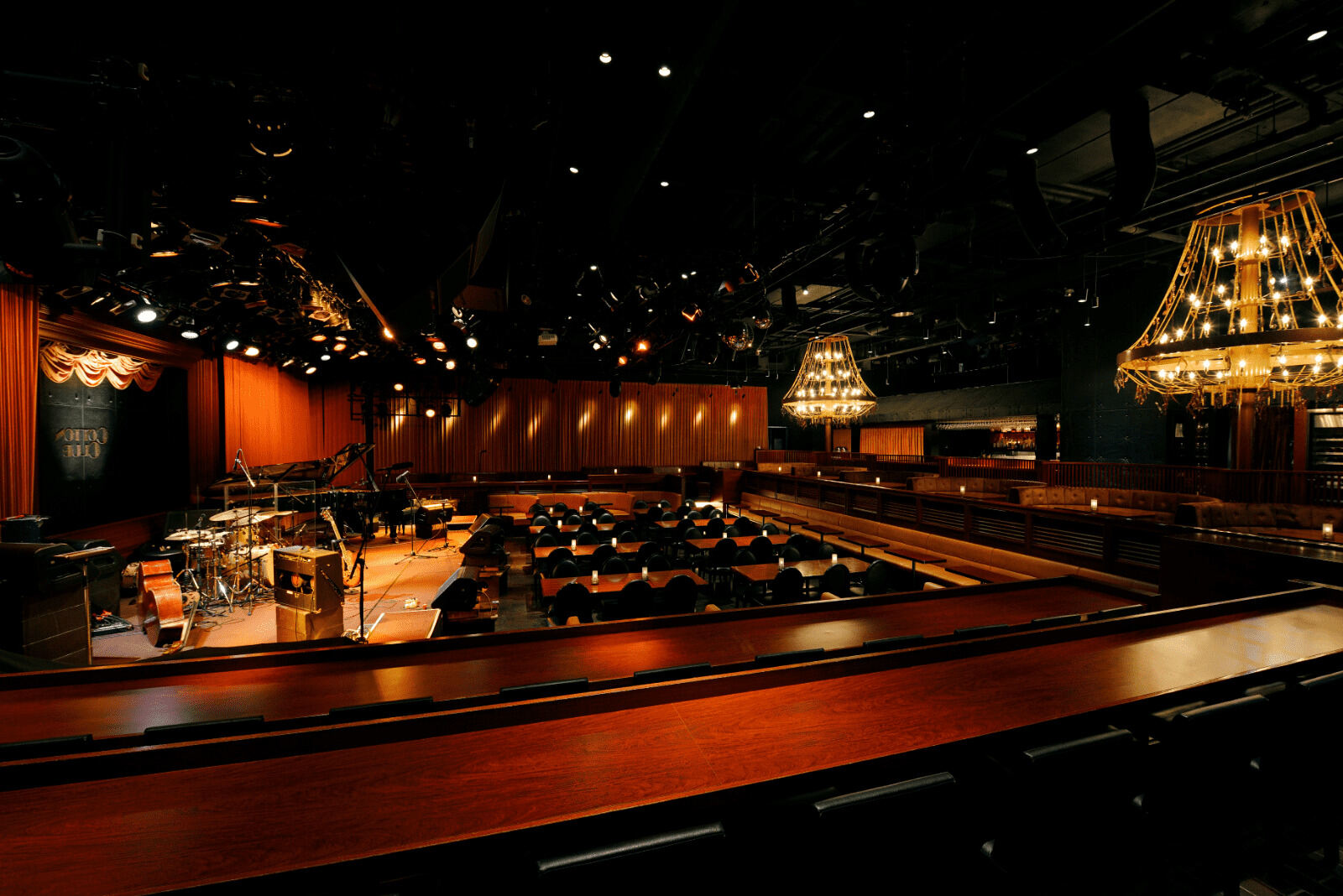
The Cotton Club was more than just a nightclub; it was a cultural phenomenon. Located in Harlem, New York City, this iconic venue became a symbol of the Jazz Age during the 1920s and 1930s. Famous for its music, dance, and extravagant shows, the club hosted legendary performers like Duke Ellington, Louis Armstrong, and Billie Holiday. Despite its glitzy reputation, the Cotton Club had a complex history marked by racial segregation. Patrons were predominantly white, while the performers were African American, reflecting the racial tensions of the era. This paradox makes the Cotton Club a fascinating subject to explore, offering insights into the social dynamics and artistic achievements of its time. Ready to dive into 37 intriguing facts about this legendary venue? Let's get started!
Key Takeaways:
- The Cotton Club, a legendary nightclub in Harlem, was a hotspot for jazz music and entertainment during the Prohibition era. It featured iconic performers like Duke Ellington, Cab Calloway, and Ella Fitzgerald.
- Despite its controversies, the Cotton Club left a lasting impact on American culture, popularizing jazz music and launching the careers of legendary musicians. Its glamorous atmosphere also influenced fashion trends of the time.
The Birth of the Cotton Club
The Cotton Club was a legendary nightclub in Harlem, New York City. It became famous during the Prohibition era and was a hotspot for jazz music and entertainment.
-
Opened in 1923: The Cotton Club first opened its doors in 1923, originally located at 142nd Street and Lenox Avenue in Harlem.
-
Owned by a Mobster: The club was owned by Owney Madden, a notorious mobster who used it as a front for his bootlegging operations.
-
Prohibition Era: The club thrived during Prohibition, a time when the sale of alcohol was illegal in the United States.
The Entertainment Hub
The Cotton Club was known for its incredible lineup of performers. Many legendary musicians and entertainers graced its stage, making it a cultural landmark.
-
Duke Ellington: Duke Ellington and his orchestra were the house band from 1927 to 1931, bringing jazz to the forefront of American music.
-
Cab Calloway: Cab Calloway took over as the house band leader after Ellington, becoming a major star in his own right.
-
Ella Fitzgerald: Ella Fitzgerald, one of the greatest jazz singers of all time, performed at the Cotton Club early in her career.
Segregation and Controversy
Despite its fame, the Cotton Club was not without its controversies. The club's policies reflected the racial tensions of the time.
-
Segregated Audience: The club had a strict "whites-only" policy for its audience, even though the performers were predominantly African American.
-
"Jungle" Decor: The club's interior was decorated with a "jungle" theme, which many criticized as perpetuating racial stereotypes.
-
Black Performers, White Patrons: While black performers were celebrated on stage, they were not allowed to sit in the audience or mingle with the patrons.
The Move to Midtown
In 1936, the Cotton Club moved from Harlem to a new location in Midtown Manhattan. This move marked a new chapter in its history.
-
New Location: The new Cotton Club opened at 48th Street and Broadway, bringing its unique brand of entertainment to a broader audience.
-
Bigger Venue: The Midtown location was larger, allowing for more elaborate shows and bigger audiences.
-
Continued Success: Despite the move, the club continued to attract top talent and remained a popular destination for nightlife.
The Decline and Closure
The Cotton Club's popularity began to wane in the late 1930s, leading to its eventual closure.
-
Changing Tastes: As musical tastes evolved, the club struggled to keep up with new trends in entertainment.
-
World War II: The onset of World War II also contributed to the club's decline, as many performers and patrons were drafted into the military.
-
Closed in 1940: The Cotton Club closed its doors for the final time in 1940, ending an era of jazz and nightlife in New York City.
Cultural Impact and Legacy
Even after its closure, the Cotton Club left a lasting impact on American culture and music.
-
Jazz Legacy: The club played a crucial role in popularizing jazz music and launching the careers of many legendary musicians.
-
Film and Television: The Cotton Club has been featured in numerous films and TV shows, cementing its place in popular culture.
-
Musical Influence: The music and performances from the Cotton Club continue to influence artists and musicians to this day.
Famous Performers
The Cotton Club was a launching pad for many famous performers who went on to have illustrious careers.
-
Lena Horne: Lena Horne, a renowned singer and actress, got her start at the Cotton Club.
-
Bill "Bojangles" Robinson: The legendary tap dancer Bill Robinson performed at the club, wowing audiences with his incredible talent.
-
Louis Armstrong: Louis Armstrong, one of the most influential figures in jazz, also graced the stage of the Cotton Club.
Iconic Shows and Acts
The Cotton Club was known for its extravagant shows and unique acts that captivated audiences.
-
"Cotton Club Parade": The "Cotton Club Parade" was a famous revue that featured music, dance, and comedy acts.
-
Exotic Dancers: The club was known for its exotic dancers, who performed elaborate routines in glamorous costumes.
-
Comedy Acts: Comedy was a staple of the Cotton Club's entertainment lineup, with many famous comedians performing there.
The Cotton Club in Literature
The club has been immortalized in literature, with many authors writing about its significance and allure.
-
Langston Hughes: Poet Langston Hughes wrote about the Cotton Club in his works, capturing its essence and cultural impact.
-
Zora Neale Hurston: Author Zora Neale Hurston also referenced the club in her writings, highlighting its role in the Harlem Renaissance.
-
F. Scott Fitzgerald: F. Scott Fitzgerald mentioned the Cotton Club in his novel "The Great Gatsby," showcasing its prominence in the Jazz Age.
The Cotton Club Today
Though the original Cotton Club no longer exists, its legacy lives on in various forms.
-
Tribute Clubs: Several clubs and venues have been named after the Cotton Club, paying homage to its history and influence.
-
Historical Tours: Harlem historical tours often include stops at the original site of the Cotton Club, educating visitors about its significance.
-
Documentaries: Numerous documentaries have been made about the Cotton Club, preserving its story for future generations.
The Cotton Club's Influence on Fashion
The club's glamorous atmosphere and stylish patrons had a significant impact on fashion trends of the time.
-
Flapper Dresses: The flapper dresses worn by female patrons became iconic, symbolizing the carefree spirit of the Jazz Age.
-
Zoot Suits: Male patrons often wore zoot suits, which became a popular fashion trend in the 1930s and 1940s.
-
Hairstyles: The hairstyles of Cotton Club performers and patrons influenced beauty trends, with many women adopting the bob haircut.
The Cotton Club's Role in the Harlem Renaissance
The club played a crucial role in the Harlem Renaissance, a cultural movement that celebrated African American art, music, and literature.
-
Cultural Hub: The Cotton Club was a cultural hub during the Harlem Renaissance, attracting artists, writers, and musicians.
-
Artistic Collaboration: The club provided a space for artistic collaboration, with many performers and artists working together on projects.
-
Promotion of African American Culture: The Cotton Club helped promote African American culture and talent, bringing it to a wider audience.
The Cotton Club's Enduring Mystique
Even decades after its closure, the Cotton Club continues to captivate the imagination of people around the world.
- Enduring Mystique: The Cotton Club's enduring mystique and legacy make it a fascinating subject for historians, musicians, and fans of jazz and nightlife.
The Legacy of the Cotton Club
The Cotton Club wasn't just a nightclub; it was a cultural phenomenon. It played a pivotal role in the Harlem Renaissance, showcasing the talents of African American artists like Duke Ellington and Cab Calloway. Despite its segregated audience policy, the club's influence on music and culture was undeniable. The Cotton Club helped bring jazz and blues to mainstream America, leaving a lasting impact on the music industry. Its legacy lives on through the countless artists it inspired and the cultural shifts it helped ignite. The club's story is a reminder of the power of art to transcend barriers and bring people together. Whether you're a music lover or a history buff, the Cotton Club remains a fascinating chapter in the story of American entertainment.
Frequently Asked Questions
Was this page helpful?
Our commitment to delivering trustworthy and engaging content is at the heart of what we do. Each fact on our site is contributed by real users like you, bringing a wealth of diverse insights and information. To ensure the highest standards of accuracy and reliability, our dedicated editors meticulously review each submission. This process guarantees that the facts we share are not only fascinating but also credible. Trust in our commitment to quality and authenticity as you explore and learn with us.


